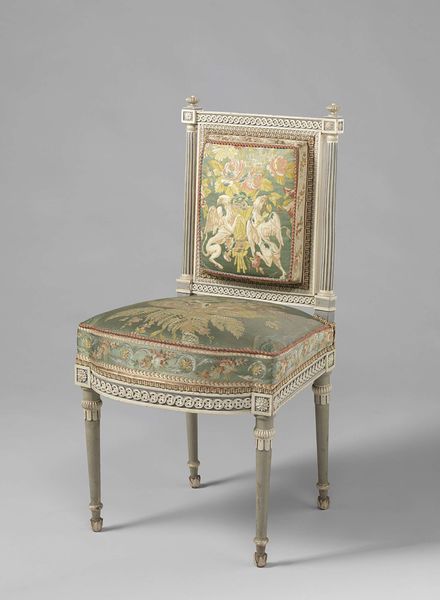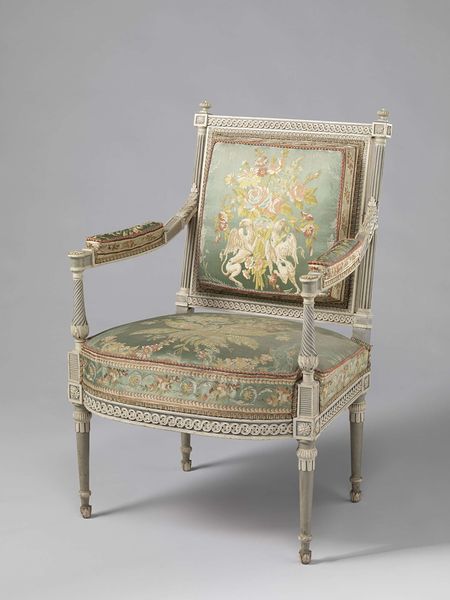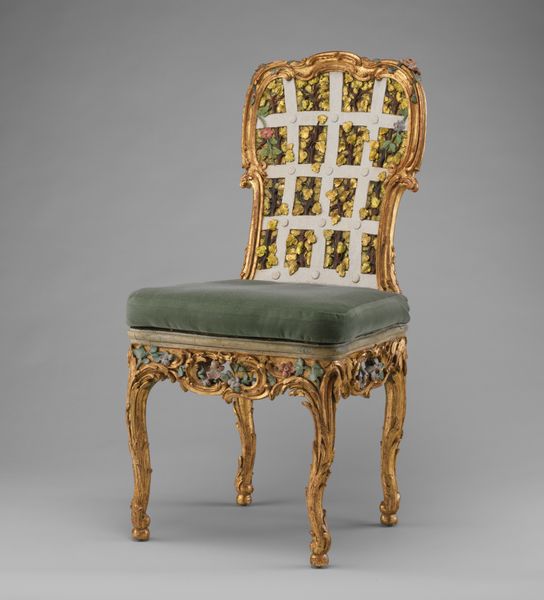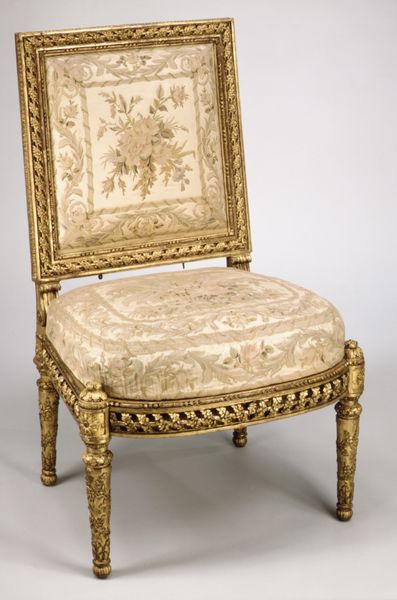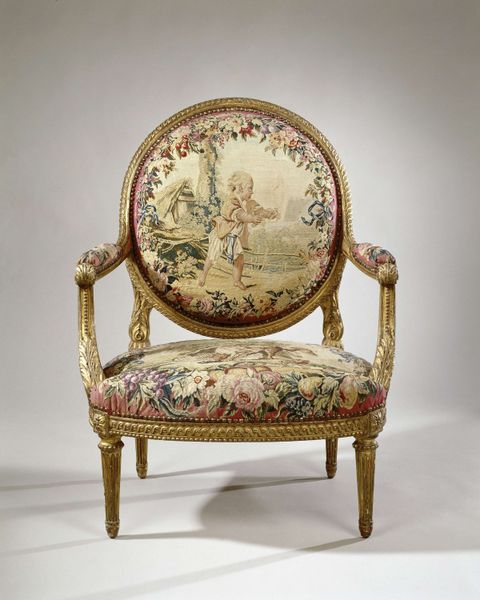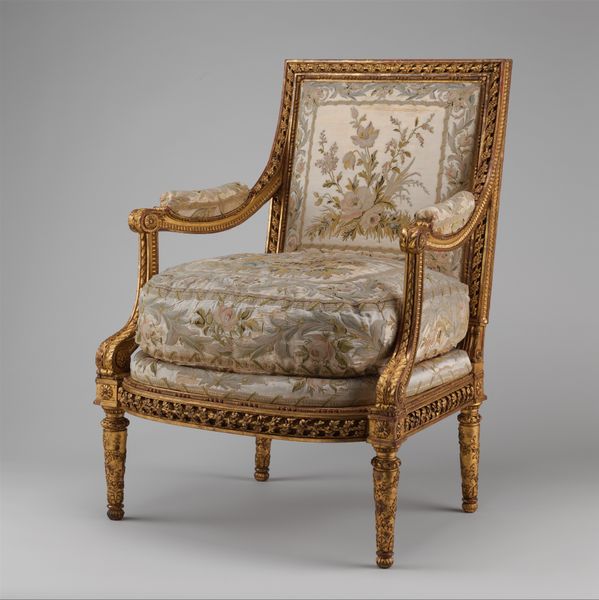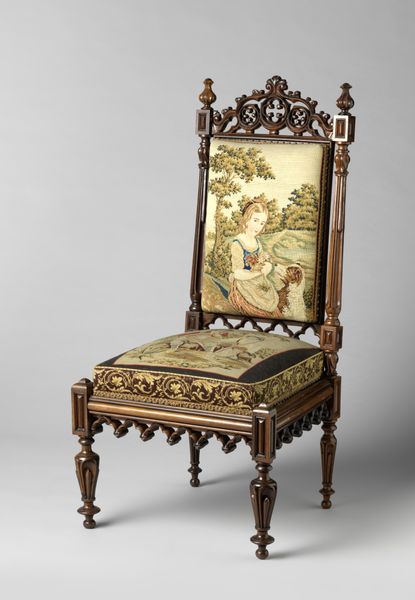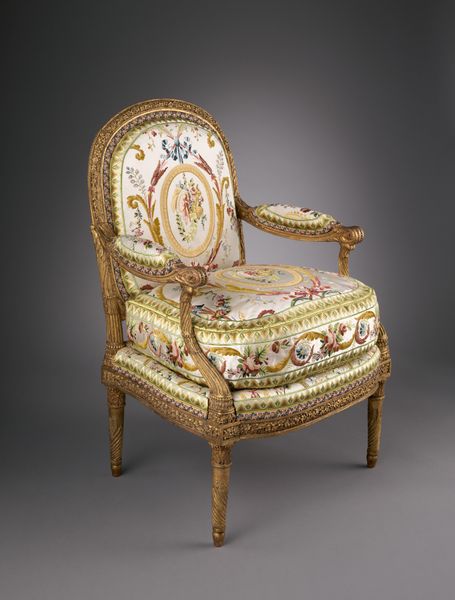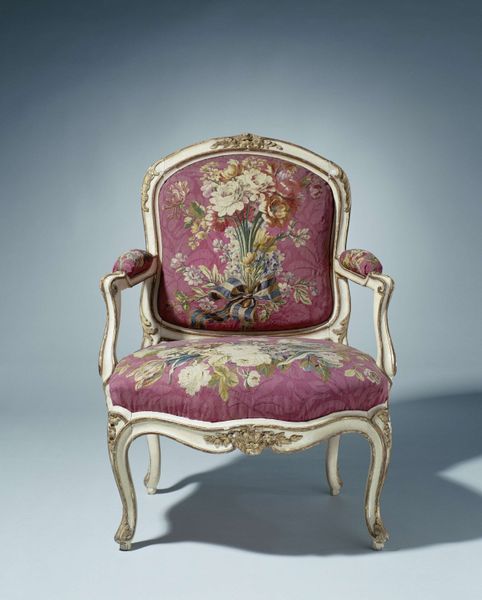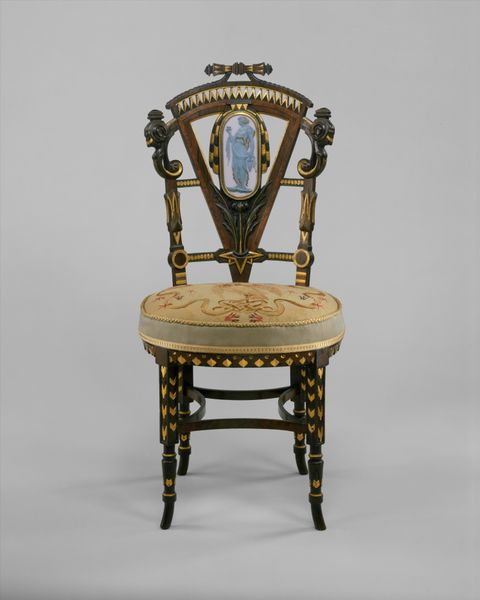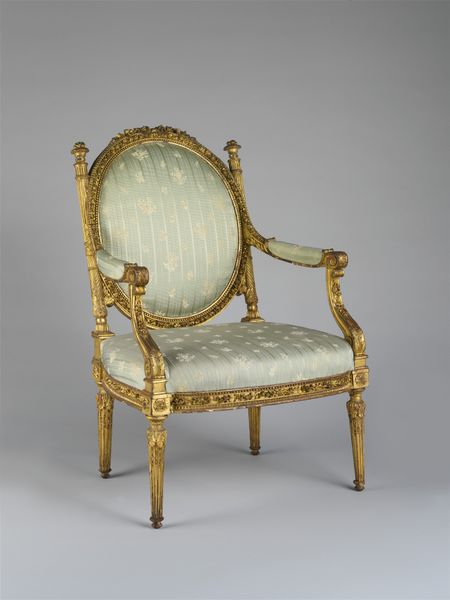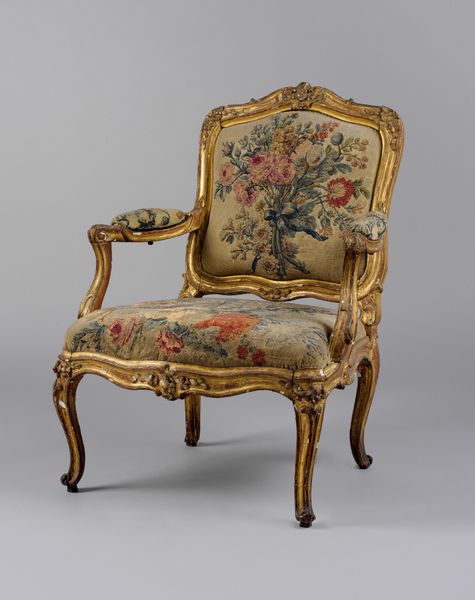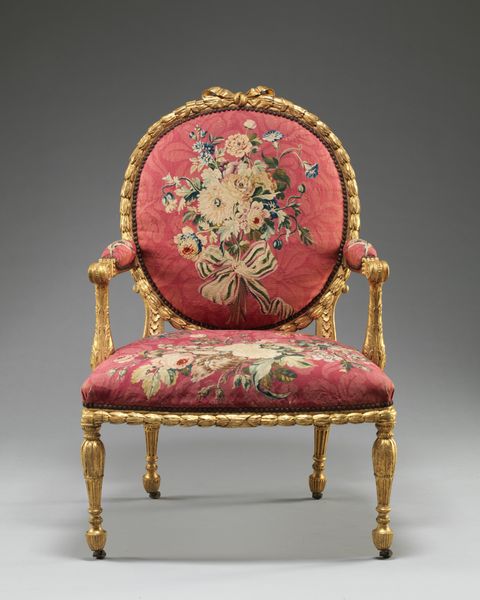
weaving, textile, wood
#
neoclacissism
#
weaving
#
textile
#
figuration
#
wood
#
decorative-art
Dimensions: height 93 cm, width 49 cm, depth 52.5 cm, height 50 cm, width 49 cm, depth 39 cm
Copyright: Rijks Museum: Open Domain
Curator: Allow me to introduce this stunning example of late 18th-century decorative art, a chair referred to as 'Stoel Kops-ameublement.' It was likely crafted between 1793 and 1795, and we believe it comes from an anonymous maker. The materials are wonderfully diverse: wood, textile and weaving converge in this single object. Editor: My first thought is how muted and delicate the colors are. A sort of understated opulence. The tapestry looks intricate; almost like a miniature garden scene has been captured. Curator: Precisely! The tapestry is key. The overall design clearly reflects the Neoclassical style that dominated the era. Notice the straight lines and the geometric forms contrasting with the organic tapestry inserts. These are designed to signal status, inspired by ancient Greece and Rome and evoking ideas of Republicanism, order and reason during the tumultuous revolutionary years. Editor: And the figuration on the tapestry—those hybrid creatures. What are they? I see wings. There is a hint of fantasy. Curator: Most likely representations of sphinxes or griffins which often were symbols associated with royalty, and knowledge and guarding against evil. That combination of floral elements and classical motifs offers a peek into the cultural anxieties and aspirations of the time, where elite craft and decoration tried to reconcile aristocracy with revolutionary thinking. The material value here communicates access, a luxury afforded by those who enjoyed great power. Editor: So it’s a materialization of complex societal tensions. And a powerful message contained within something we might see as an ordinary, functional object. Curator: Exactly. We tend to forget how carefully constructed these environments would have been. Displaying items such as this in a home sent very clear signals of taste, wealth, and political inclination. Consider, who would be sitting on this chair? Editor: Absolutely, and how the experience of inhabiting that space defined their perception and engagement with broader social dynamics. Even a single chair invites us to consider this intersectional narrative. Curator: It is extraordinary that such an everyday object embodies a unique historical moment in time. Editor: Agreed, the confluence of materials, design and purpose truly encapsulates its time and social position.
Comments
No comments
Be the first to comment and join the conversation on the ultimate creative platform.
